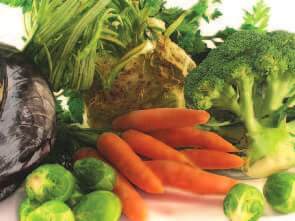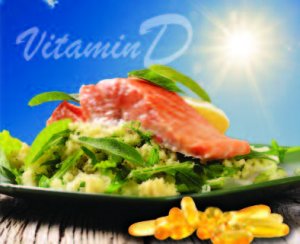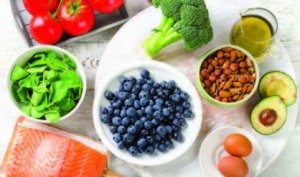by Specialdocs Consultants, LLC | Nov 20, 2017 | Nutrition, Patient News

Turkey sandwiches…soups…deli meats. Are these the building blocks of a healthy meal or stealthy contributors of excess sodium? Both, according to experts, but improved versions are in the works, thanks to June 2016 Food and Drug Administration (FDA) recommended guidelines and commitments from food manufacturers and restaurant operators to shake down the salt.
Implicated in a litany of ills from increased risk of heart disease and stroke to higher blood pressure, sodium is one of today’s major targets for elimination in the quest for a healthy diet. According to the Institute of Medicine, reducing sodium intake to 2,300 mg daily can significantly reduce blood pressure, ultimately preventing hundreds of thousands of premature illnesses and deaths. Currently, Americans consume on average, about 3,400 mg a day (a teaspoon and a half), most of it involuntarily.
“While a majority of Americans reports watching or trying to reduce added salt in their diets, the deck has been stacked against them,” the FDA stated. “The majority of sodium intake comes from processed and prepared foods, not the saltshaker.”
The guidelines set targets for reducing sodium over the next decade in the majority of processed and prepared foods, including pizza, deli meats, canned soup, snacks, breads and rolls. Already Nestle has reduced the salt in its pizzas, General Mills reduced sodium in more than 350 products, and Mars Food, Unilever and PepsiCo have pledged to follow suit.
Experts at the Harvard School of Public Health and the American Heart Association urge even further downward pressure on sodium in the diet, recommending a limit of 1,500 mg per day. Dr. Frank Sacks, the Principal Investigator in the groundbreaking Dietary Approaches to Stop Hypertension (DASH) Sodium-Trial, concurs, saying the effect of sodium intake on blood pressure is strong and causal, and called the new guidelines “a tremendous step forward to lower heart attacks and strokes in the US.”
Start shrinking the sodium in your diet with these simple, tasty strategies:
-
- Plant-based foods such as carrots, spinach, apples, and peaches, are naturally salt-free.
- Add sun-dried tomatoes, dried mushrooms, cranberries, cherries, and other dried fruits to salads and foods for bursts of flavor.
- Enhance soups with a splash of lemon and other citrus fruits, or wine; use as a marinade for chicken and other meats.
- Avoid onion or garlic salt; instead use fresh garlic and onion, or onion and garlic powder.
- Try vinegars (white and red wine, rice wine, balsamic). Maximize flavor by adding at the end of cooking time.
- For heat and spice, try dry mustard, fresh chopped hot peppers and paprika.
On vegetables:
-
- Carrots – Cinnamon, cloves, dill, ginger, marjoram, nutmeg, rosemary, sage
- Corn – Cumin, curry powder, paprika, parsley
- Green beans – Dill, lemon juice, marjoram, oregano, tarragon, thyme
- Tomatoes – Basil, bay leaf, dill, onion, oregano, parsley, pepper
On meats:
- Fish – Curry powder, dill, dry mustard, lemon juice, lemongrass, paprika, pepper, saffron
- Chicken – Poultry seasoning, rosemary, sage, tamarind, tarragon, thyme
- Pork – Cilantro, garlic, onion, sage, pepper, oregano
- Beef – Marjoram, nutmeg, paprika, sage, thyme
The post Salt Shake Down: Sodium Reduction is on the Table appeared first on Specialdocs Consultants.
by Specialdocs Consultants, LLC | Nov 20, 2017 | Nutrition, Patient News

While the evidence is not yet in on the enhanced nutritional value of organic or natural foods, consumers appear to have made their own decision. The latest research shows more than 62 percent of Americans now regularly shop for these types of products and pay premium prices for ‘farm to table’ dishes when dining out. Many questions remain, however, chief among them: what exactly is promised by these terms…and do they deliver?
The lack of official guidelines can make it difficult to identify the difference between ‘organic’ and ‘natural’ or ‘cage-free’ versus ‘free-range.’ The Food and Drug Administration (FDA) does not formally define ‘natural,’ but refers to a longstanding policy that interprets it to mean nothing artificial or synthetic has been added to a food that wouldn’t normally be expected, without addressing production, processing or manufacturing methods. Realizing the term is vague, even misleading, the FDA is solicitingpublic input until May and plans to issue more meaningful standards later this year.
For now, “’all-natural’ is more of a marketing ploy,” according to Mick Bessire, agricultural educator at Cornell Cooperative Extension. “Antibiotics can be used in production, or chickens can be raised in battery cages and have their beaks trimmed and still be called natural.”
Other frequently used terms:
Organic: A USDA Organic seal signifies that the product is made without synthetic fertilizers, irradiation, and has not been genetically modified in any way; no antibiotics or growth hormones are used in meats; 100 percent organic feed is used for livestock. The use of food additives and fortifying agents such as preservatives, artificial sweeteners and colors is severely restricted. Usually pesticide-free, too.
Hormone-Free: The best choice for hormone-free meat is products with the USDA Organic label. Hormones are already banned in egg-laying hens.
Grass-Fed: Look for an American Grass-fed Association or Animal Welfare Approved stamp, which guarantee the animal was raised on a family-owned pasture or range. Beyond the humane
benefits, some studies have found that grass-fed beef contains higher levels of healthy fatty acids and antioxidants.
Cage-Free: A voluntary label recognized by the USDA’s Agricultural Marketing Service (AMS) as birds permitted to roam, but generally without access to the outdoors.
Free-Range or Free-Roaming: Another voluntary label that indicates animals have access to the outdoors but type and duration is undefined.
Pasture-raised: Means animals roam freely and eat vegetation in their natural environment.
Certified Humane: Offers more specific guidelines for cage-free, free-range and pasture-raised labels.
White/brown eggs: Does not indicate quality or nutrition levels, but is based on the breed of the egg-laying hen.
Farm-raised fish: Frequently bred to be heavier, grow faster and can contain chemicals versus wild-caught fish. Diner beware though: according to advocacy organization Oceana’s recent study, restaurant customers were misled about salmon 43 percent of the time – ordering sustainable wild salmon as labeled on the menu, but receiving farmed salmon on their plates.
Is it worth the effort? Probably. For example, wild salmon contains far more healthy omega 3 fatty acids than farm-raised salmon. While a recent study from Mayo Clinic showed that many organically and conventionally produced foodstuffs were similar nutritionally, organic foods are inarguably less processed and more sustainable choices – good for our bodies and the environment.
The post Is What You’re Reading What You’re Eating? appeared first on Specialdocs Consultants.
by Specialdocs Consultants, LLC | Nov 20, 2017 | Nutrition, Patient News

While they may not have the crisp appeal of sugar snap peas or the sleek appearance of a summer tomato, winter’s bounty of root vegetables and greens brings some of the year’s most nutrient-rich dishes to the table. Serve up as chips or gratins, roasted or braised, mashed or raw, in soups or salads…see our recommendations for a taste of the season below.
If you like kale, try collard greens, a super-green that can be thinly sliced and used in salads, or braised with mushrooms for satisfying flavor without meat. Anti-inflammatory, antioxidant (cancer preventive) and cholesterol-lowing nutrients are on the long list of benefits.
Looking for low-carb substitutes for mashed or fried potatoes? Pureed cauliflower makes a delightful stand-in for mashed potatoes, especially when blended with Greek yogurt. Less common are Romanesco, an excellent source of vitamins C and K, fiber and carotenoids; Kohlrabi, with edible roots, leaves and stems packed with potassium and Vitamin C; and Celeriac, also known as root-celery, containing antioxidants, Vitamin K and phosphorus. For a healthy alternative to French fries, consider Jerusalem artichokes, or sunchokes, with a mellow taste and flaky texture, and plenty of energy-boosting iron and cholesterol-lowering soluble fiber. Slice matchstick-thin, mix in a sprinkle of vegetable oil, rosemary, cayenne, salt and pepper and bake for 15 minutes. Or enjoy a baked sweet potato, skin and all, for a winter treat that’s high in Vitamin A and fiber, with a minimum of calories.
Beets, high in folic acids, offer crunch, color and taste. Sautee with garlic and some olive oil or use in soups for a nutritional boost.
Change up onions with leeks, which have a milder, sweeter flavor, and compounds such as allicin that fight free radicals in your body and flavonols that may help fight cancer and lower the risk of heart disease.
Carrots are always a sturdy choice, rich in beta carotene, a compound that may reduce heart disease and certain types of cancer (although supplements are not recommended, especially for smokers), and Vitamin A, which bolsters vision and bone growth. Parsnips offer a change of pace, with a sweet flavor, double the fiber of carrots, potassium and folate for cardiovascular benefits, and almost 40 percent of the daily requirement of Vitamin K, a nutrient associated with bone health.
Winter squash, in a variety of shapes, colors and flavors, are rich in Vitamins C and A, and can be boiled, baked, roasted, simmered, steamed, microwaved or sautéed. For a low-calorie alternative to pasta, try spaghetti squash which yields long yellow strands when cooked. Sweet potato fans will enjoy butternut squash, with a similar sweet nuttiness and an even silkier texture.
Broccoli contains calcium, folate, iron, protein, Vitamins A and C and fiber, and is versatile enough to steam, roast, stir fry, puree for soups or eat raw.
Give winter salads a spin with a bowl of curly endive, radicchio, beets, fennel, kohlrabi and turnip greens. Roast or boil until tender and dress while still warm to allow the flavors to be completely absorbed.
There are many more choices in the produce aisle…go browse your local grocery store and try something new this winter!
The post Find Your Roots with Winter’s Best Veggies appeared first on Specialdocs Consultants.
by Specialdocs Consultants, LLC | Nov 20, 2017 | Nutrition, Patient News

In the multi-lettered world of vitamins and minerals, why did Vitamin D move to the top of the list…and should it be there? Following is a look at the paradox of the “sunshine vitamin,” critical to the body’s healthy function in numerous ways, but may not be important enough to warrant regular screenings, according to the latest national recommendations.
The undisputed connection between Vitamin D, the sun and bone strength was established early in the 20th century, when doctors discovered that sunlight triggers the production of Vitamin D and helped cure rickets in children. Essential for strong bones, Vitamin D helps the body absorb calcium. Unlike other vitamins, however, it is naturally present in very few foods (fish like salmon and mackerel, eggs, mushrooms and commercially fortified milk). Dr. John Cannell, who founded the Vitamin D Council to better advocate for its use, cautions: “It’s nearly impossible to get what you need from food.”
For many Americans, lack of sunshine except during the short summer season poses a concern because exposure to the sun is necessary to turn a chemical in the skin into Vitamin D. Even in sunny climates, people who spend most of their day indoors or faithfully apply sunscreen are at risk of Vitamin D deficiency, according to research that emerged in the 2000s. Low levels of the vitamin were increasingly linked to a litany of the world’s ills—cancer, heart disease, diabetes, arthritis, even depression. By 2012, researchers had discovered that Vitamin D receptors were found not only in the intestines, but in many other organs. “We know that basically every cell in your body has a Vitamin D receptor; it has been found in the brain, skeletal muscle, colon, breast, prostate, and the list goes on,” Dr. Michael F. Holick, a prominent expert at Boston University Medical Center, told Endocrine News.
Additional research bolstered the importance of Vitamin D, such as a recent British Medical Journal study that tracked more than 95,000 participants for nearly 40 years to find that genes associated with permanent low levels of Vitamin D raised the risk of early death by up to 40 percent. However, the study’s author cautioned that the relationship was not proven to be causal and therefore, no recommendations for supplements can be made.
The chicken-egg conundrum is explained by Dr. JoAnn Manson, Professor of Medicine at Harvard Medical School: “We’re at a crossroads because we really don’t know if there’s a cause and effect relationship between Vitamin D status and outcomes such as heart disease and cancer.” Obesity and lack of exercise contribute to higher rates of cancer and heart disease, so those factors could explain the illnesses, rather than a low Vitamin D level, she said.
In fact, despite the mountains of research, the U.S. Preventive Services Task Force (USPSTF) stated late in 2014 there is insufficient evidence to justify taking mega-doses of Vitamin D to prevent chronic diseases, and did not recommend regular testing of blood levels. All eyes are now on the national, 26,000-participant VITAL trial, which will conclusively report in 2017 the effects of Vitamin D or fish oil on reducing the risk of cancer, heart disease and stroke.
Different medical experts suggest different guidelines for Vitamin D supplementation. The Institute of Medicine’s guidelines state 600 IU (International Units) for ages 14 to 70, and 800 IU for age 71 and above; the Endocrine Society recommends 1,500-2,000 IU per day, and the Vitamin D Council advises “safe, sensible sun exposure, and if that’s not possible, 5,000 IU a day.” Please call my office for recommendations on the right amount of Vitamin D for you.
The post How Much Vitamin D Do We Really Need? appeared first on Specialdocs Consultants.
by Specialdocs Consultants, LLC | Nov 20, 2017 | Nutrition, Patient News

Let food be thy medicine and medicine be thy food. – Hippocrates
Food’s healing properties is a concept that stems back to the earliest days of medicine, but has taken on new significance as a natural way to prevent or manage today’s most devastating illnesses, from dementia to heart disease. The regimens presented below are not ‘diets’ in the traditional sense, but rather represent a shift to eating habits that preserve wellness.
DASH (Dietary Approaches to Stop Hypertension), a low-sodium diet that encourages consumption of foods rich in nutrients such as potassium and calcium magnesium that help lower blood pressure, prevent diabetes and support heart health.
The Mediterranean diet emphasizes fish, fruits, and vegetables, with olive oil as the main source of fat, has gained prominence for its link to stronger bones, a healthier heart and reduced blood pressure.
Combining both of the above, the MIND (Mediterranean-DASH Intervention for Neurodegenerative Delay) diet, from Rush University Medical Center, shows real promise in helping patients maintain cognition and reduce the risk of dementia. Seniors who rigorously adhered to the recommended foods lowered their risk for Alzheimer’s disease by 53 percent, but even those who followed it only moderately well experienced a 35 percent reduction, according to newly published research from the Health and Retirement Study. The focus is on eating ‘brain-healthy’ foods, including:
Green leafy vegetables, such as spinach or kale – at least six servings weekly
- Other vegetables – at least one serving daily
- Nuts
- Berries – at least twice weekly
- Beans – at least three servings weekly
- Whole grains – three servings daily
- Fish – at least once weekly
- Poultry – at least twice weekly
- Olive oil
- Wine – once daily, if desired
Excluded: red meat, butter, margarine, cheese, pastries, sweets, refined sugar or flour, and fried or fast food. Eggs and dairy are included but in small portions.
Additional research points to the role of a high quality diet in preserving brain health and maintaining cognition. However, MIND study lead author and nutritional epidemiologist Claire McEvoy, Phd, cautions that to conclusively prove the connection between diet and dementia risk, the next step is to conduct clinical trials. In the meantime, experts say there’s no harm in incorporating these foods into your daily diet, as they provide antioxidants, assist with maintenance of normal blood pressure levels and help keep chronic inflammation in check.
Other plans worth considering:
Weight Watchers: still a smart, effective diet after 54 years. It’s rated high by dietitians for ease of adherence, nutritional soundness, emphasis on group support, abundance of fruits and vegetables, and allowance for occasional indulgences.
Mayo Clinic Diet: consisting of a two-week jump start for weight loss, followed by a lifelong approach to diet and health, with information on food choices, portion sizes, menu planning and physical activity. The emphasis is on generous amounts of low-energy-dense foods that help you lose weight by feeling full on fewer calories, and includes whole-grain carbohydrates, lean sources of protein and unsaturated fats. At least 30 minutes of exercise is recommended daily. A typical 1200-calorie-a-day menu includes:
- Breakfast: 1/2 cup cooked oatmeal with 1 cup milk and 2 tablespoons raisins, 1/4 cup mango, calorie-free beverage
- Lunch: Quinoa and sweet potato cakes, tossed salad with fat-free dressing, calorie-free beverage
- Dinner: 1 pita pizza, 3/4 cup mixed fruit, calorie-free beverage
- Snack: 1 cup sliced bell peppers and 2 tablespoons hummus
The post MIND Your Diet appeared first on Specialdocs Consultants.
by Specialdocs Consultants, LLC | Nov 20, 2017 | Nutrition, Patient News

As we become more aware of what comprises healthy eating, sugar is increasingly viewed with a wary eye. Evidence is mounting that a sugar-filled diet – and the resulting weight gain – can lead to increased cholesterol, blood pressure and inflammation, and to a higher risk of obesity and obesity-related conditions such as diabetes, pre-diabetes, cancer and cardiovascular disease (CVD). The key to prevention is understanding exactly what sugars you’re eating.
Naturally occurring sugars are found in foods such as fruit (fructose) and milk (lactose). Any product that contains milk, such as yogurt or cream, or fresh or dried fruit contains some natural sugars. These can be eaten freely.
Added sugars hide in 74 percent of packaged foods, even those that many consider healthy, such as energy bars. They also lurk in savory foods, including ketchup, breads, salad dressing and pasta sauce. The top five sources are sugar-sweetened beverages (soda, specialty coffees, sports drinks); grain-based sweets (cookies, cakes, pies); fruit drinks (juice cocktails, punch); dairy-based desserts (ice cream, frozen yogurt); and candy (lollipops, jelly beans). These should be limited.
“Consider the company the sugar keeps. If it’s accompanied by a nutritional element, it is not a contributor to disease,” advises Jennifer McDaniel, Academy of Nutrition and Dietetics spokesperson. For example, fruit contains fructose, but also fiber, which ensures the natural sugar is absorbed in a slow and controlled manner; the same applies to the protein in plain yogurt.
Guidelines for maximum daily amount of added sugars vary as follows:
- US Department of Health and Human Services: no more than 10% of total calories
- World Health Organization: encourages no more than 5%
- American Heart Association: no more than 6 teaspoons for women or 9 for men
While a complete sugar detox is not recommended – there is little evidence that it improves health or spurs weight loss – cutting back on added sugars to make room for healthier calories is strongly advised. McDaniel suggests:
- Look for the biggest offenders of added sugars in your diet, whether it’s chocolate or soft drinks, and replace them with something yo• look forward to eating.
- Make a super food swap. Enjoy a sweet bedtime snack? Consider blending a frozen banana with a splash of milk and unsweetened cocoa powder.
- Know your sweet tooth personality. If you’re an all or nothing person, it may be easier to eliminate your sweet triggers permanently, but if yo• can handle eating a square of chocolate without needing the whole bar, permit yourself the treat.
- Try the ‘Plain Jane’ version. When you’re in charge of the sweetness factor, you’ll almost always use less than presweetened version, so buy plain oats and add your own fruit and honey.
Can sugar be part of a healthy diet? Thankfully, yes. “It’s all about balance. The majority of our diet should be foods that nourish us, but there’s certainly a place for the sweet treats in life,” says McDaniel.
Sweet Disguise
It can be difficult to discern if a product contains both added and natural sugars, because the nutrition fact panels of food products don’t distinguish between them. That’s set to change in 2018 when federal regulations mandate the break out of added sugars. For now, be on the lookout for sugar in one of its many guises:
- Corn sweetener
- Corn, malt or maple syrups
- Fruit juice concentrates
- Honey
- Molasses
- Agave nectar
- Barley malt
- Cane juice
- Caramel
- Muscovado
- Turbinado
- Sweet Sorghum
- Treacle
The post Sweet Surrender: Is Sugar Off the Table for Healthy Eaters? appeared first on Specialdocs Consultants.







Recent Comments